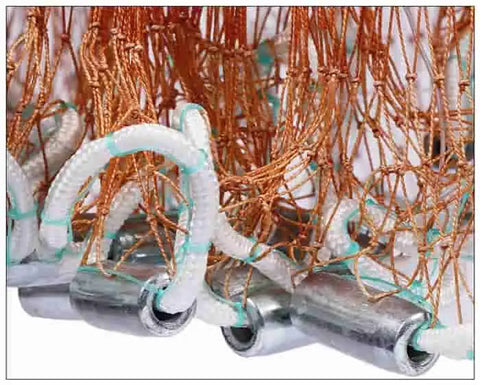Table of Contents
Cast Net: How to Maintain It and Keep it in a Good Condition
Fishing is an age-old tradition that requires the right equipment for a successful outing. One essential equipment for any fisherman is a cast net—a tool used to capture fish and bait in shallow water. But what do you need to do to keep your cast net in optimal condition? In this article, we'll explore the best ways to maintain your cast net to stay reliable and effective for years to come.

Cleaning and Drying Your Cast Net on Time
Assuming you have already rinsed your cast net of any bait residue, there are still a few more steps to take to ensure it is properly cleaned. First, soak your catch in a five-gallon bucket filled with fresh water and a teaspoon of mild dish soap for about 15 minutes. After the soaking period, rinse the net thoroughly with clean water to remove any soap residue.
Next, prop up your network so that it can air dry completely. This is important because if any moisture is left in the net, it can cause mildew or other damage. Once the net is dry, fold or roll it up and store it in a cool, dry place until you are ready to use it again.
By following these simple steps, you can extend the life of your cast net and ensure that it will be ready to use whenever you need it.

Storing Your Cast Net Properly
Your cast net is vital fishing gear, so it's important to take care of it. Here are some tips on how to store your cast net so that it stays in good condition:
- Keep your cast net out of direct sunlight when you're not using it. Sunlight can damage the netting and cause it to deteriorate.
- If possible, store your cast net in a cool, dry place. Humidity can also damage the netting.
- Periodically inspect your cast net for any signs of wear or damage. If you see any frayed edges or holes, repair them immediately.
By following these simple tips, you can ensure that your cast net will last many years.
Inspecting Your Cast Net Regularly
If you want to keep your cast net in good condition, you need to inspect it regularly. Here's how to identify and fix potential issues:
- Check the netting for holes or tears. If you find any, repair them with needle and thread or by patching with fabric adhesive.
- Inspect the lead weights and make sure they're all secure. If any are loose, re-tie them or replace them with new ones.
- Check the cord or rope that attaches the lead weights to the netting. Make sure it's not frayed or damaged in any way. If it is, replace it with a new cord or rope.
- Finally, inspect the handle and make sure it's securely attached to the netting. If it's not, re-attach it or replace it with a new one.

Repairing Holes and Tears in Your Cast Net Right Away
If you've been using your cast net regularly, chances are you've already had to repair a few holes or tears. Here's a quick guide on how to do it so you can keep your cast net in good shape:
- First, identify the hole or tear in your cast net. If it's a large hole, you may need to replace the entire section of the netting.
- To repair a hole or tear, you'll need a strong fishing line and a needle. Thread the needle with a fishing line and knot the end.
- Start at the hole's edge or tear and sew through the netting, making small stitches as you go. Make sure to go through both layers of netting if there are two.
- Once you've gone around the hole or tear, knot the end of the fishing line and trim any excess.

Replacing the Netting on Your Cast Net
If you've had your cast net for a while, you've probably noticed that the netting starts to wear down and break after a certain amount of use. When this happens, it's time to replace the netting on your cast net.
You'll need to keep a few things in mind when replacing the netting on your cast net. First, you'll need to make sure you purchase the right type of netting. There are two main types of netting: nylon and polyethene. Nylon is more durable than polyethene, but it is also more expensive.
Second, you'll need to consider the size of your cast net. The smaller the cast net, the easier it will be to replace the netting. However, if you have a larger cast net, you may want to consider hiring someone to do it for you.
Finally, you'll need to decide when to replace the netting on your cast net. Generally speaking, you should replace the netting every few years or so. However, if you live in an area with harsh weather conditions, you may need to replace it more often.
Replacing the netting on your castanet is relatively easy and can be done by following these simple steps:
- Purchase new nylon or polyethene cordage that is slightly thicker than what came with your original purchase.
- Remove any old frayed, or damaged cordage currently in place.
- Cut the replacement cordage to fit the desired length and width of your cast net.
- Attach the new cordage by tying a series of knots at each end or using a splicing needle.
- Test for strength and durability by lightly tugging on the knots or knotting area.
By following these steps, you can ensure that your Cast Net is in good condition and ready to use when needed.
